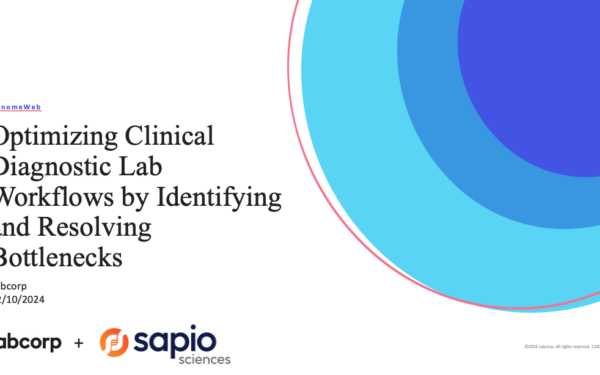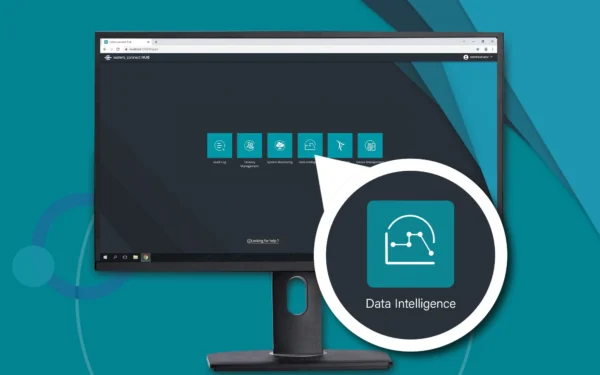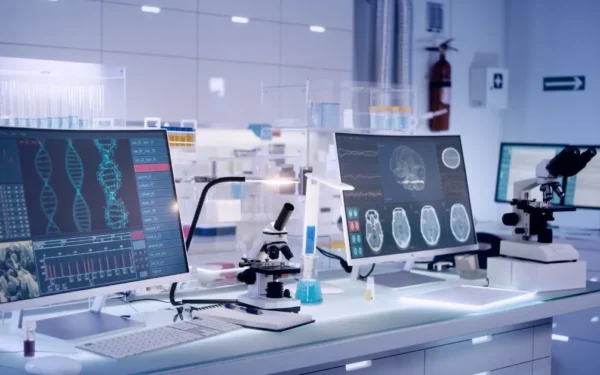Labs face fierce competition in healthcare, research, manufacturing, and other industries today. The key to staying ahead is making intelligent decisions based on reliable data instead of relying on gut feelings or past experiences. Data-driven decisions help labs optimize processes, improve operational efficiency, and deliver better results.
However, traditional reporting methods, such as spreadsheets or paper-based records, often pose scalability, accuracy and efficiency limitations. They can also lead to errors, delays and difficulty in gaining meaningful insights from the data.
One tool that can help you overcome these challenges is LIMS (Laboratory Information Management System). LIMS reports help to organize and track various aspects of lab operations, such as sample management, workflow testing and quality control. LIMS also centralizes data, which allows easier access, collaboration and analysis.
Deeper data exploration
Traditional lab reports are often time-consuming to create. A single person will have to spend a lot of time compiling test results, cross-checking information and approving reports. Also, data is often presented in a static format, such as graphs or tables, making it difficult for researchers to identify patterns and trends. The inability to interact with lab data may also lead to lab analysts missing important insights or correlations that could inform their decision-making.
LIMS software solutions allow lab workers to generate accurate and reliable reports quickly. The data is checked multiple times throughout the lifecycle, so you can be certain that the reports are error-free. Also, the LIMS reporting suite contains statistical analysis tools for deeper laboratory data exploration. With these tools, users can conduct complex analyses, such as regression analysis or hypothesis testing, to identify underlying patterns or relationships and to gain a comprehensive understanding of the processes and outcomes.
Furthermore, optimized LIMS reporting features customizable dashboards that allow reports to be designed and generated quickly. The dashboards can be tailored to display relevant performance indicators or critical parameters. Advanced data management, filtering and sorting options help you drill down into specific datasets to identify hidden correlations. The reports generated include real-time visualization of key metrics that help researchers quickly identify new trends.
Streamlined communication and collaboration
Optimized LIMS solutions allow you to create predefined laboratory workflows, meaning that once reports are created, they are automatically sent to the appropriate personnel. This prevents delays and ensures efficient communication so everyone remains on the same page.
Besides predefined lab workflows, standardized report templates play a major role in ensuring seamless communication and collaboration. As the name suggests, standardized report templates are pre-set and make it easier for researchers and lab analysts to store and compare information. They also ensure consistency, reduce confusion, and eliminate data misinterpretations by creating consistent formatting and data presentation.
LIMS reporting systems have features that encourage teamwork. For instance, the ease with which people can share reports and work on them simultaneously improves collaboration. The system also has annotation tools that let you add comments or highlights to reports to clarify important points to everyone involved.
Enhanced compliance
Regulatory compliance is essential in most laboratory settings, but meeting these requirements requires a robust LIMS. Non-compliance can lead to severe consequences, including fines, legal actions and damage to reputation.
Optimized LIMS helps overcome compliance challenges by generating audit-ready reports that offer a comprehensive overview of all lab activities. These reports simplify audits by giving users easy access to necessary information. This reduces the required time and effort for compliance checks. Also, the reports generated through LIMS software can be configured to meet specific regulatory requirements. This further helps ensure compliant data presentation.
Another vital feature of the LIMS reporting system is automated alerts that notify personnel of upcoming deadlines or potential non-compliance issues in real-time. Lab workers can take necessary actions when alerted quickly, addressing the issues promptly and maintaining compliance effectively.
Unified insights for informed decision-making
In many laboratories, data is stored at different locations. For instance, every lab worker will have a Excel spreadsheet of their own, each with its own rules, terms and other specifications. Researchers then have to spend numerous hours finding the necessary information, which can lead to incomplete insights and decisions.
LIMS links different systems together, including lab instruments and software, through system-to-system interfacing. This integration breaks down barriers between data sources and brings all the information together in one place.
By centralizing the databank, laboratories can easily get a unified view of their operations. They can, therefore, see how different parts of the lab work together to spot correlations and trends and make informed decisions to improve their processes. This holistic approach allows a much deeper understanding of the data.
Enhanced data integration
Optimized LIMS reporting makes it easier for labs to consolidate their LIMS data in whatever platform and approach they’re using, whether that’s a data lake, data warehouse, or a science aware scientific data platform like Sapio Jarvis.
Data warehousing is a term that refers to storing different types of data in one central location. Laboratories use this approach to bring together data from various sources, including their LIMS software and other systems, in one place to make data analysis more comprehensive and to gain broader insights.
Data lakes are repositories where information from different sources is stored in its natural, raw format. The integration helps labs gain more insights from their data, spot patterns and make smarter decisions based on a holistic view of their data.
Getting more from your LIMS software data
Lab work typically involves dealing with vast amounts of data daily, and each task requires careful tracking, analysis and documentation. LIMS software mitigates the burden of working in the lab by streamlining data and ensuring accuracy, traceability and compliance with regulatory standards. Alongside these benefits, LIMS reporting also paves the way for informed decision-making, process optimization and overall lab efficiency.
Therefore, working with LIMS is effective and a lot more comfortable. Sapio’s LIMS software aligns with all the latest regulations and industry standards. Our LIMS system will seamlessly integrate into your lab processes and can be customized to suit your unique needs. Request a free demo and see how our LIMS software can make your laboratory operations smoother and more efficient.





